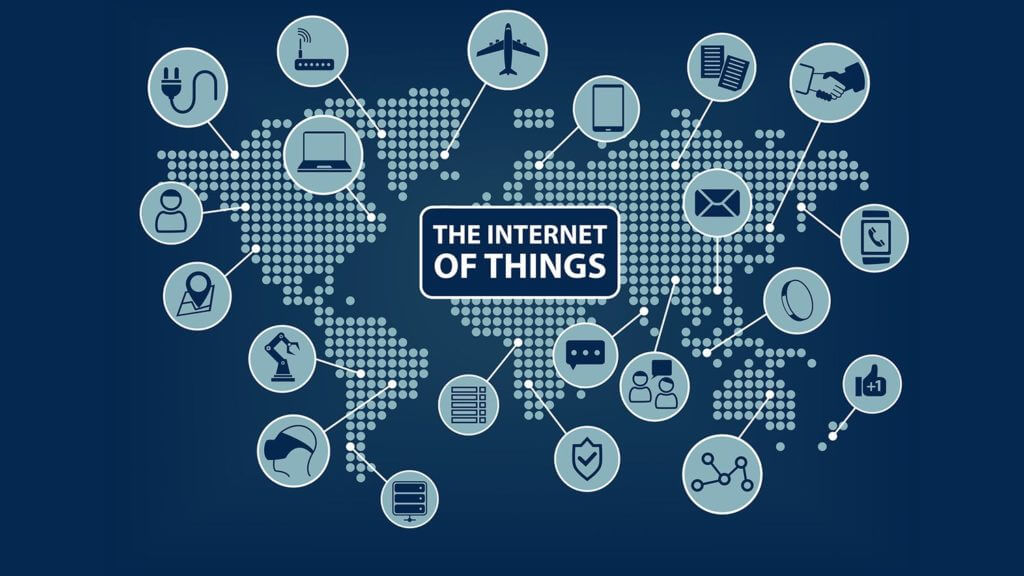Most people have heard the term cryptocurrency. But while some are confused by it, most have no inkling about what it means, or what it’s all about.
Cryptocurrency is an internet-based digital currency that utilizes cryptography to secure and facilitate transactions. Cryptocurrencies, sometimes simply called cryptos, leverage a technology known as blockchain – which lends them features like decentralization, immutability, impermeable security, and transparency.
Decentralization means that all participants in the network have equal power to approve transactions without the need for a central authority. Their high degree of security is enabled by the fact that transactions are broadcast across thousands of nodes, which must confirm any change to the system. This makes it impossible for malicious parties to hack the system.
More and more cryptos are entering the space, each with improvement in certain aspects of their predecessor. But is there actual value beyond cryptocurrencies being a means of exchange? Is the technology that powers cryptos applicable outside the world of finance? In this article, we explore the different challenges in our world that cryptocurrency is solving or has the potential to solve – from borderless money transfers to real estate, to centralization, to data privacy, and more.
Intermediation Fees
Cryptocurrencies solve the problem of intermediation charges. In the current money transfer business, there are so many intermediaries involved in the process – all of which contribute to excessive amounts of fees for customers. Also, the current options for sending money are not only expensive but also take days.
Cryptocurrency has the potential to solve these problems and is already being used in several applications to this end. Take BitPesa, a service currently operating in Nigeria, Kenya, Uganda, Tanzania, Senegal, and the Democratic Republic of Congo. This service uses a blockchain-based system to send money within a day, as opposed to the traditional methods which take days and at a much cheaper rate (1% to 3% cost of transactions).
Another case is the Monetha payment system – which is based on the Ethereum cryptocurrency protocol. The system can carry out transactions five times cheaper and 10,000 faster than conventional systems.
Centralization

One of the most exciting aspects of the technology underlying cryptocurrency is that it’s entirely decentralized – meaning it is not dependent on any authority for control. This essentially removes the need for a central authority while preventing one entity from having too much power over the system.
Centralized systems have certain inherent weaknesses that make them ineffective in the long run. Firstly, as it has a single point of data control, a centralized system is more susceptible to malicious attacks. Centralized systems are also prone to price manipulation – whose results benefit only those at the top.
Centralization also raises the question of privacy. As digitization becomes the norm in the average person’s life, so is the concern for the safety of their data. The sheer volumes of people’s private data associated with centralized systems, especially with their vulnerability to bad actors, is not a favorable idea for the average person.
This is where cryptocurrency comes to the rescue. A decentralized structure levels the field for all participants in the network such that no one entity has too much power to manipulate the system. A decentralized, peer to peer network is also secure. This is enabled by the fact that for hackers to successfully gain access to the system, they would have to hack more than half the nodes in the network, which is nearly impossible.
Privacy
Traditional payment models like banks leave a trace of financial transactions. With cryptocurrency, it’s different. Cryptocurrencies are built with privacy and security that allow you to conceal your identity and transactions. Some like Dash, Monero, Zcash, Verge, Bytecoin, etc. have even been created to provide complete anonymity.

There are several methods that cryptocurrencies use to conceal user information. Some use high-level encryption tools like The Invisible Internet Project and Tor, while others employ cryptography methods that provide proof of knowledge – without revealing that knowledge.
Double Spending
Cryptocurrencies also solve the issue of double-spending. Double spending, as the term suggests, is spending the same money more than once – a potential flaw with digital currencies. With physical cash, it’s impossible to spend the same money twice. For example, you go to the ice cream stand and ask for an ice cream cone worth 1 dollar. You pay in cash and hand over the dollar to the cashier. As soon as you hand over the dollar, you can’t spend it again.
On the other hand, a transaction with digital currency involves broadcasting to all the ‘nodes’ in the network. These nodes have to receive and confirm the transaction, and this takes time. This is where the concern of duplication arises. How can we be sure someone will not copy the transaction and rebroadcast it before it has been received and confirmed?
It’s hard to verify the real owner of a digital token – considering it can be cloned, duplicated, copied, or shared infinitely. Simply put, it’s difficult to confirm if a token has only been spent once.
Cryptocurrency solves this by ensuring users cannot double-spend coins. Blockchain – the technology underlying the currency, has a powerful mechanism that enables all nodes in the network to be aware of every transaction. And since the nodes show the history of the order in which they received a transaction, any attempts to double-spend are pointless.
Unbanked Populations

Currently, 1.7 billion worldwide are unbanked – without access to financial services like insurance, investment, loans, money transfers, or deposit accounts. The lack of access to financial services makes it impossible for these people to escape the vortex of poverty. Meanwhile, traditional financial institutions like banks do not have the requisite structure to cater to this market segment without incurring losses.
Blockchain-based solutions offer ways to provide financial services and still make a profit. They eliminate the need for expensive brick and mortar banking infrastructures.
For example, blockchain technology can decrease the costs of providing microfinancing services. They also remove the need for the manual, multiple verifications that are associated with transferring money to emerging markets. This is made possible by smart contracts that radically cut costs and speed up local and international transfers.
An example of crypto-based solutions changing lives by providing banking services happens in Venezuela. The collapse of the country’s Venezuela Bolivar currency has resulted in people using cryptocurrencies as an economic lifeline, making them more resilient in an unstable economy.
Food Fraud
Cryptocurrency based technology also helps to prevent food fraud. One high profile case of food fraud was the horsemeat scandal in parts of Europe when meat advertised as beef in supermarkets was discovered to be horsemeat.
Food fraud can occur in several forms – including adulteration, which is substituting an ingredient with a cheaper one, and misrepresentation – which includes fashioning a product as organic when it isn’t. These fraudulent practices not only pose health risks to consumers but also cost the food industry billions of dollars each year.
While there are systems in place to curb food fraud, they aren’t completely tamper-proof, and it’s still very possible to play the system. Blockchain technology can be used to design systems that can track and authenticate every step of the food supply chain. This means that every party that handles food: from the farmer to the manufacturer to the store to the kitchen to your plate, becomes a block in the blockchain. The thing with blockchain is that it’s completely transparent, and its stringent verification process makes it impossible to misrepresent or forge a transaction.
An example of cryptocurrency in action for food safety is Vietnam-based TE-FOOD, which has created a system in which every step of food production can be traced. Using the blockchain protocol, TE-FOOD provides a transparent and immutable (unchangeable) environment to track thousands of pigs, chickens, and eggs, increasing trust in the food ecosystem.
Contract Conflicts
Traditional contracts are often the source of many business and legal conflicts arising from miscommunication, poor drafting, etc. It’s also a process that involves a coterie of lawyers, time-consuming negotiations, and a multitude of drafting phases.

Enter smart contracts, the crypto-based technology that digitally facilitates, verifies, and enforces contract negotiations and performance. This type of contract enables trusted business agreements to happen without the need for third parties, a central authority, or lawyers.
Smart contracts work by self-execution of the negotiations between the parties. The contract is written in lines of code, after which both the code and the agreement are distributed across a blockchain network. This code controls the execution of the contract, and agreements are trackable and irreversible.
The decentralization and transparency of blockchain eliminate the need for an intermediary – saving time, money, and conflict. Besides, the technology is faster, cheaper, and secure, allowing for more reliable contracting. Where traditional contracts need long-winded verification procedures, smart contracts proceed with the utmost speed and efficiency. They set the stage for specific outcomes, removing any confusion or the potential of protracted litigation battles.
Election Fraud
In an era when the integrity of elections is increasingly under the microscope, blockchain can provide solutions for transparent and fair elections. Candidates who lose elections may launch legal battles that can delay the result and hold a country hostage.
The blockchain digital ledger intrinsically creates an audit trail that not only simplifies the verification process but also minimizes the cost for expensive election apparatus. Furthermore, the process is wholly transparent so that anyone and everyone can verify the integrity of the results.
Crypto technology further provides an irrefutable record of the votes cast – eliminating the possibility for election rigging. Moreover, voters can cast their votes from the comfort of their mobile phones, enabling them to have a say in the process no matter their location.
Internet of Things

The Internet of Things (IoT) is a concept of creating a network of devices with the internet and each other, including vehicles, home appliances, communication devices, wearable devices, and pretty much everything you can think of. The idea is to make the things we interact with daily to be more valuable to us. For example, your coffee maker monitoring when you wake up and then making coffee, or your shower heating 20 minutes before you reach home.
The Internet of Things promises increased productivity and enhanced asset utilization to improve our modern lifestyles. But a significant impediment to the adoption of IoT has been the closed ecosystem (a system in which one or two people control the system), which some manufacturers stipulate as a requirement. This locks out other vendors from availing products to consumers, while also being denied a choice to compare and use hardware from different manufacturers.
Also, IoT raises a lot of security and data privacy concerns, seeing as these devices would be communicating with external networks, rendering them vulnerable to hackers. Cases of connected refrigerators or automobiles being hacked are well documented. Also, IoT devices contain enormous amounts of data, which can lead to massive security breaches.
Blockchain technology can help solve these problems by:
- Decentralizing the IoT to enable devices to connect directly; without manufacturers locking consumers into any particular ecosystem.
- Decentralizing the IoT to prevent attacks – as a hacker would have to target all nodes on the network to obtain data – which is highly improbable
Lack of an Identity
Currently, 1 billion people worldwide do not have an identity. A large fraction of this number is refugees. When refugees are forced to flee their homes, many leave behind essential documents such as ID cards, birth certificates, and passports. Being able to prove one’s identity is critical because, without it, it’s difficult to access services that help begin a new life, local integration, or self-sufficiency – like a bank account, healthcare, a SIM card, etc.
Cryptocurrency technology can come in useful in these contexts. The technology can host and transact infinite amounts of data on its publicly available ledger. Furthermore, identities on the network cannot be falsified, tampered with, and are time stamped.
Governments and charity organizations can use blockchain-based technology to issue digital identification to refugees, which would enable them to prove their identity and that of their loved ones and access financial services, healthcare, and education.
One example of blockchain improving refugee’s life is that of Bitnation, a startup that utilizes the technology to help refugees obtain digitally-enabled ID documents. By verifying a person’s social media presence and linking it to their social security number, passport, and other documents, he/she can prove their identity to the host government.
Arbitrary Asset Freezing
Cryptocurrencies can help citizens living in autocratic jurisdictions retain financial independence in contexts where governments unfairly freeze their bank accounts and assets. When people living in these countries run afoul of powerful individuals, their assets can be frozen or their attempt at transactions in local currency barred.
Unlike fiat currencies (government-issued currencies), cryptocurrencies are immune from tyrannical whims. Crypto funds and transactions are stored in numerous nodes around the world, rendering government control infeasible.
Real-Estate
The cryptocurrency protocol can be used to solve many problems in the real estate industry, among which are fraud, high fees, price barriers, etc.

Firstly, a cryptocurrency protocol can remove the need for paper-based record trails that are susceptible to manipulation and falsification. Blockchain transactions are tamper-proof and transparent, ensuring all parties transact fairly.
Secondly, blockchain transactions are time-stamped – allowing for a party to prove without a doubt that a particular transaction took place at a specific date and time. The decentralized and transparent nature of blockchain also means everyone involved can know – and verify ownership details.
Furthermore, blockchain-enabled smart contracts can help cut costs by eliminating the need for middlemen like banks, lawyers, guarantors, etc.
Blockchain can also enable tokenization (turning things into digital, tradable assets) such that even low-income buyers can own part of the property – while also allowing the seller to at least get a fraction of the total payment on the spot.
Accountability in Nonprofits
Public trust in charities has dwindled in recent years due to cases of embezzlement and mismanagement coming to light. Blockchain technology can help these organizations achieve financial transparency.
Crypto coins such as AidCoin are designed for this very purpose: to allow transparent donations to legitimate charities. This way, donors can monitor where their money is going, and charities are forced to channel donations to the right purposes.
An exciting use of this application is by the World Food Programme (WFP) to securely provide thousands of people with cash assistance. In Jordan, refugees can enter a store and simply look at an iris scanner, which then verifies their identity and then expends a food voucher. This system is based on Ethereum, a cryptocurrency.
Conclusion
These uses are just some of the numerous applications of cryptocurrency technology in solving problems in our everyday life. Across the food industry, finance, technology, and other sectors, exciting and innovative uses of cryptocurrency are being discovered every day. Also, more cryptos with real-world applications will keep budding if the current landscape is anything to go by.






